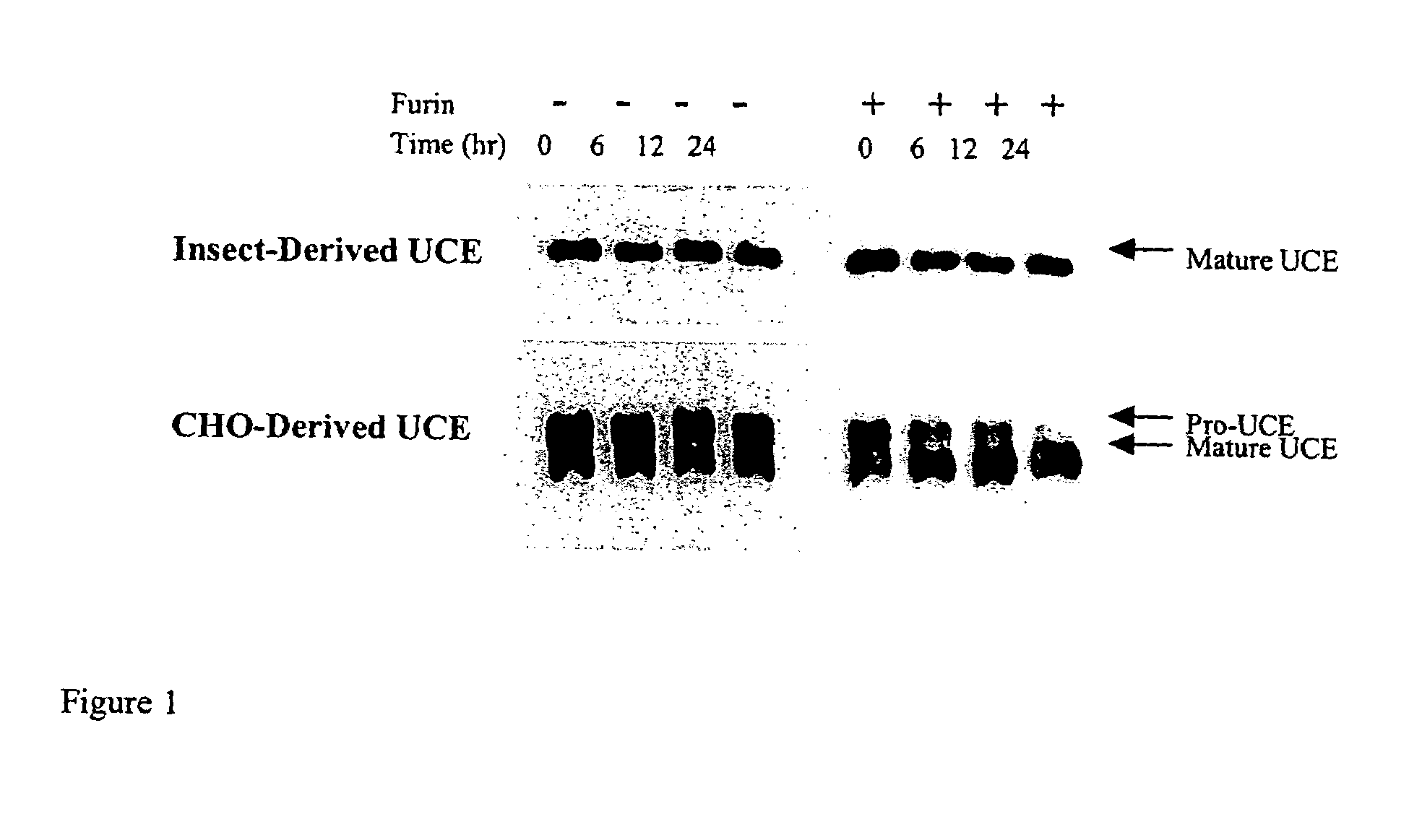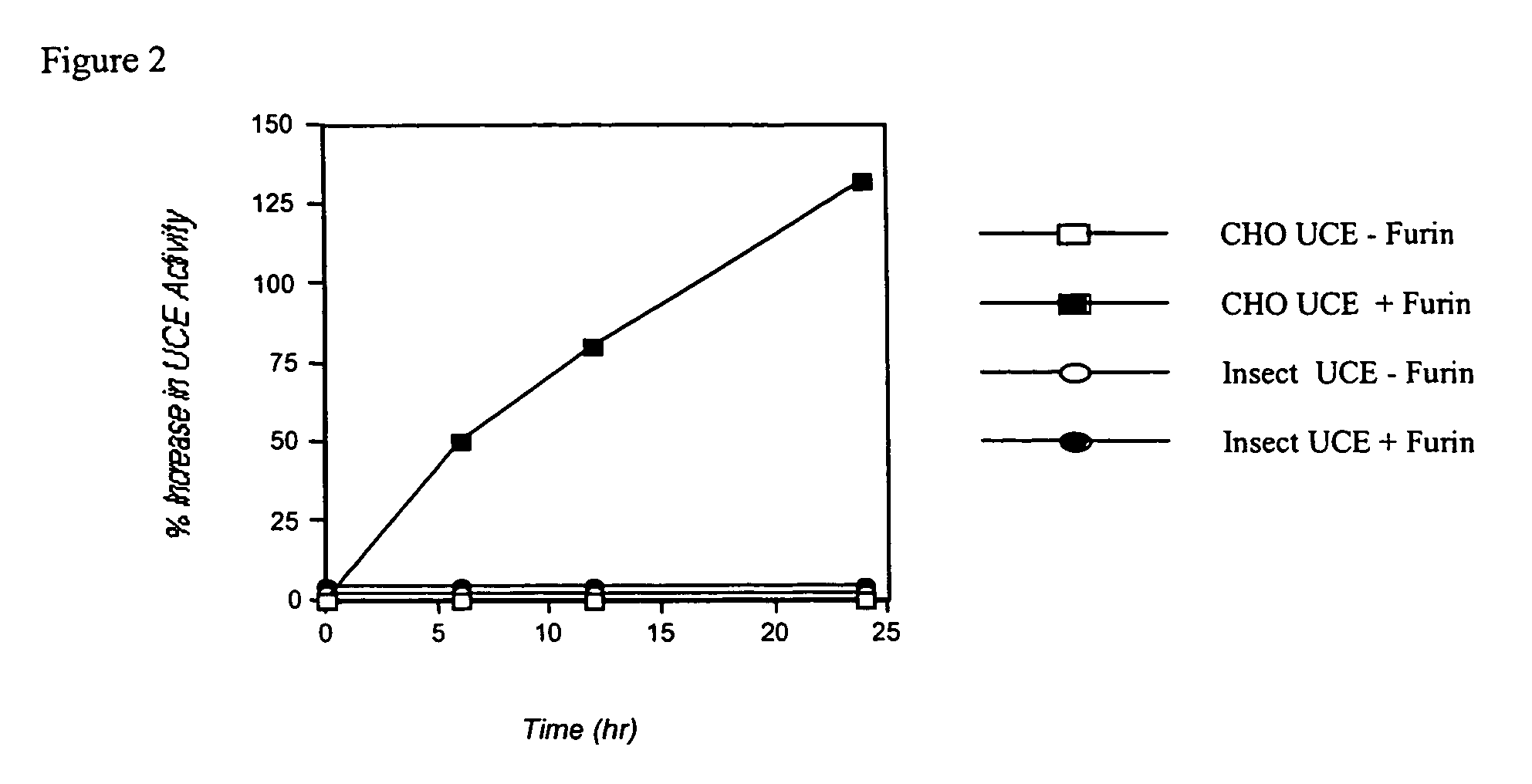Expression of lysosomal hydrolase in cells expressing pro-N-acetylglucosamine-1-phosphodiester α-N-acetyl glucosimanidase
a technology of lysosomal hydrolase and lysosomal hydrolase, which is applied in the field of expression of lysosomal hydrolase in cells, can solve the problems of inability to degrade, chronic illness and death of hundreds of individuals each year, and achieve the effects of improving yield, reducing steps necessary, and facilitating a simple and reliable method of production
- Summary
- Abstract
- Description
- Claims
- Application Information
AI Technical Summary
Benefits of technology
Problems solved by technology
Method used
Image
Examples
examples
Differential Specific Activity of CHO and Insect-Expressed Human UCE
[0060]CHO K-1 cells were transfected with plasmid pKB6 that encodes an epitope-tagged, soluble human phosphodiester α-GlcNAcase (“Uncovering Enzyme” or UCE). Similarly, insect cells were infected with a baculovirus that contained the epitope-tagged human UCE cDNA (performed by Protein Sciences, Inc.). The UCE-conditioned media from each expression system was affinity-purified via a HPC4 antibody column. The HPC4 eluates were concentrated via Centricons and assayed using the synthetic substrate [3H]GlcNAc-P-Man-α-Me to determine UCE activity. The UCE protein concentration was measured by either absorbance at a wavelength of 280 nm or with a protein quantitation kit e.g., Micro BCA Assay (Pierce-Endogen) and Advanced Protein Assay (Cytoskeleton). The purification of CHO— and insect-expressed UCE is summarized below.
[0061]
ProteinTotalUCETotal UCESpecificVolumeConc.ProteinActivityActivityActivityFoldSample(ml)(mg / ml)(mg...
PUM
| Property | Measurement | Unit |
|---|---|---|
| temperature | aaaaa | aaaaa |
| temperature | aaaaa | aaaaa |
| pH | aaaaa | aaaaa |
Abstract
Description
Claims
Application Information
 Login to View More
Login to View More - R&D
- Intellectual Property
- Life Sciences
- Materials
- Tech Scout
- Unparalleled Data Quality
- Higher Quality Content
- 60% Fewer Hallucinations
Browse by: Latest US Patents, China's latest patents, Technical Efficacy Thesaurus, Application Domain, Technology Topic, Popular Technical Reports.
© 2025 PatSnap. All rights reserved.Legal|Privacy policy|Modern Slavery Act Transparency Statement|Sitemap|About US| Contact US: help@patsnap.com



